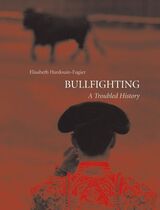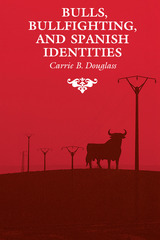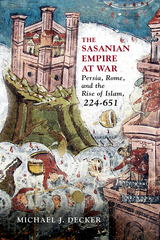
“Bullfighting is the only art in which the artist is in danger of death and in which the degree of brilliance in the performance is left to the fighter's honor,” wrote Ernest Hemingway in Death in the Afternoon. Art? Ritual? Sport? Cruelty? Though opinions are divided, one thing is certain—bullfighting sparks passionate responses. Supporters argue that bullfighting is a culturally important tradition stretching back thousands of years; while animal rights groups argue that it is cruel and barbaric, causing unnecessary suffering to both bulls and horses. In Bullfighting: A Troubled History Elisabeth Hardouin-Fugier brings clarity to this debate through an exploration of the long history of killing bulls as public spectacle.
This book is the first cross-cultural study of bullfighting, covering Europe, North America, and Latin America. Hardouin-Fugier shows how each continent has its own unique style and tools of the trade. For example, in North America, the favored technique is grabbing the bull by the horns, and in Europe the bull is run through with a sword. In the late 1700s bullfights became mass leisure activities, with paying spectators packing into arenas—the classic bullfight of popular imagination. It was at this time that the bullfight became a big business and the bullfighter became a celebrity. In this vivid and comprehensive history, Hardouin-Fugier also explores the extensive influence of the bullfight on art, literature, and culture from the paintings of Goya to the writings of Georges Bataille.
Enriched with many fascinating and sometimes disturbing illustrations, Bullfighting presents a discerning and intelligent approach to a divisive practice. Hardouin-Fugier’s informative history will enthrall anyone who has been curious about bullfighting—supporters and detractors alike.

In talking about bulls and bullfighting, observes Douglass, one ends up talking not only about differences in region, class, and politics in Spain but also about that country's ongoing struggle between modernity and tradition. She relates how Spaniards and outsiders see bullfighting as representative of a traditional, irrational Spain contrasted with a more civilized Europe, and she shows how Spaniards' ambivalence about bullfighting is actually a way of expressing ambivalence about the loss of traditional culture in a modern world. To fully explore the symbolism of bulls and bullfighting, Douglass offers an overview of Spain's fiesta cycle, in which the bull is central. She broadly and meticulously details three different fiestas through ethnographic fieldwork conducted over a number of years, delineating the differences in festivals held in different regions.
She also shows how a cycle of these fiestas may hold the key to resolving some of Spain's fundamental political contradictions by uniting the different regions of Spain and reconciling opposing political camps--the right, which holds that there is one Spain, and the left, which contends that there are many. Bulls, Bullfighting, and Spanish Identities is an intriguing study of symbolism used to examine the broader anthropological issues of identity and nationhood. Through its focus on the political discourse of bulls and bullfighting, it makes an original contribution to understanding not only Spanish politics but also Spain's place in the modern world.
READERS
Browse our collection.
PUBLISHERS
See BiblioVault's publisher services.
STUDENT SERVICES
Files for college accessibility offices.
UChicago Accessibility Resources
home | accessibility | search | about | contact us
BiblioVault ® 2001 - 2025
The University of Chicago Press









